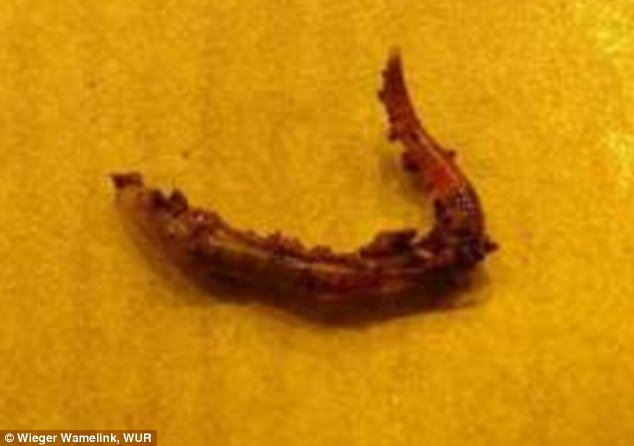
Worms have been born in Martian soil – bringing colonisation of the Red Planet a step closer.
Wieger Wamelink, Ph.D., a biologist at Wageningen University in the Netherlands, reported Monday that his team has gotten earthworms to successfully reproduce in soil that mimics Martian soil. This advancement, he tells Inverse, could pave the way for sustainable agriculture on the red planet.
“We never expected that. It shows that the worms can thrive in the Mars soil simulant, and offspring is important since worms also die,” says Wamelink. “It is key for a sustainable agricultural ecosystem.”
Even if future Martians do figure out ways to survive hazards like space radiation, actual meteor showers, and build underground habitats, they’ll still need to eat. But as nice as it would be to eat a big, juicy Martian pork chop, raising livestock with limited resources just isn’t feasible. That’s where earthworms come in.
Earthworms will be essential for Martian colonists to grow vegetable crops since they’ll provide a way to supply plants with nutrients. As decomposers, earthworms break down dead plant and animal matter, recycling the nutrients back into the ecosystem. On Earth, worms digest dead leaves, roadkill, and anything else that finds its way into the soil, excreting this organic matter in forms that plants can use, including the essential nutrients that plants need: nitrogen, potassium, and phosphorous.
On a Martian colony, the earthworms would do the same job but would break down something else: human urine and feces. The nutrients made available by the earthworms are crucial, Wamelink tells Inverse, because Martian soil doesn’t have the nutrients in forms that plants can use.
This worm-driven nutrient cycle, then, solves the dual problem of how to get rid of waste and how to grow vegetables. It’s also where Wamelink found an unexpected surprise. He and his team were growing arugula in a soil substrate composed of pig slurry — as a placeholder for human manure — and a Mars soil simulant made from volcanic material.
The researchers added worms to the mixture to find out whether the decomposers could make this simulated Martian soil grow crops. The crops grew successfully, but that’s not all that happened.
“Clearly the manure stimulated growth, especially in the Mars soil simulant, and we saw that the worms were active,” said Wamelink in a statement. “However, the best surprise came at the end of the experiment when we found two young worms in the Mars soil simulant.”
So, the earthworms not only successfully enriched the nutrient contents of the soil but also thrived — and reproduced. This is a big deal because it suggests that Martian food systems could be sustainable in a closed-loop ecosystem.
NASA scientists studying the Martian food problem have already grown sweet potatoes in conditions much like those of a Martian colony, but Wamelink’s team takes this research a step further by limiting nutrient cycles in a realistic and practical way.
Of course, Martians could simply cut out the middle step and just eat the excrement-chomping worms themselves, but Wamelink thinks using them for agricultural purposes is probably a better idea.
“In principle, we could, though it is not why I grew them,” says Wamelink. “But it is animal protein so you could add it to your diet and make it healthier. We grew them because they will bring back dead plant remains into the soil which they chew and mix with the soil. The bacteria can then break it further down, releasing nutrients, including reactive nitrogen, for the plants. They also make burrows, which makes water giving a lot easier, and the soil gets better aerated, which is important for plant growth, since plant roots also need oxygen.”
Vegetables typically take less energy to grow than animals, so it wouldn’t make sense for Martians to deplete all their important decomposers, anyway. As it stands, colonists may not have worm-filled meals to look forward to in 2035, but at least they can count on arugula salad!









![Separated Twins Continue Recovery [Video] Separated Twins Continue Recovery [Video]](https://webtopnews.com/wp-content/uploads/2016/10/Separated-Twins-Continue-Recovery-Video.jpg)
![2261 Pound Pumpkin Sets Record [Video] 2261 Pound Pumpkin Sets Record [Video]](https://webtopnews.com/wp-content/uploads/2016/10/2261-Pound-Pumpkin-Sets-Record-Video.jpeg)


